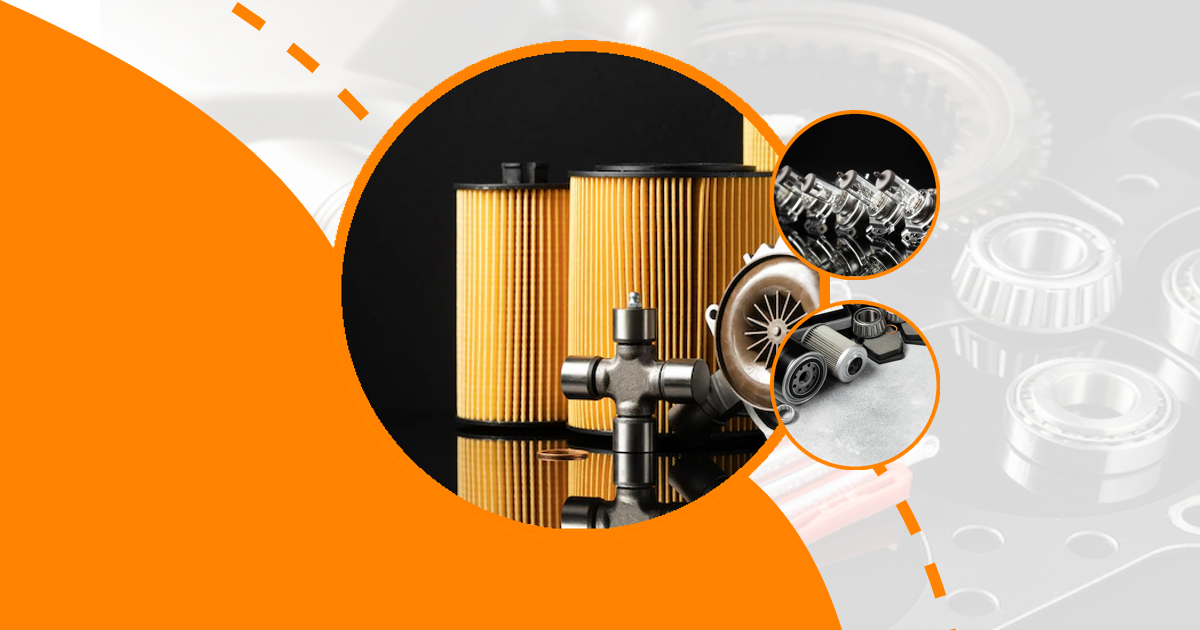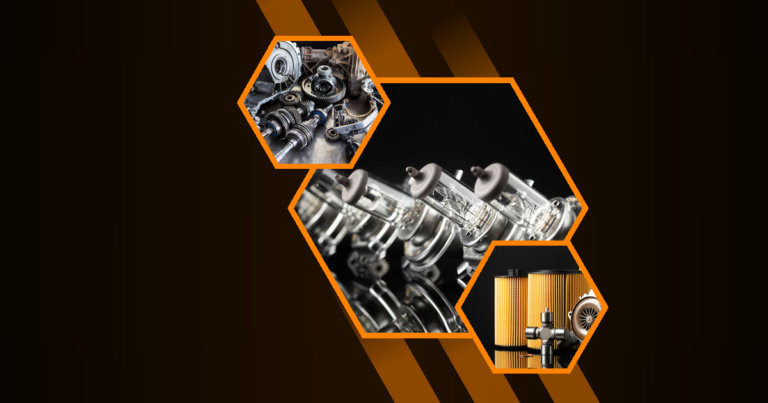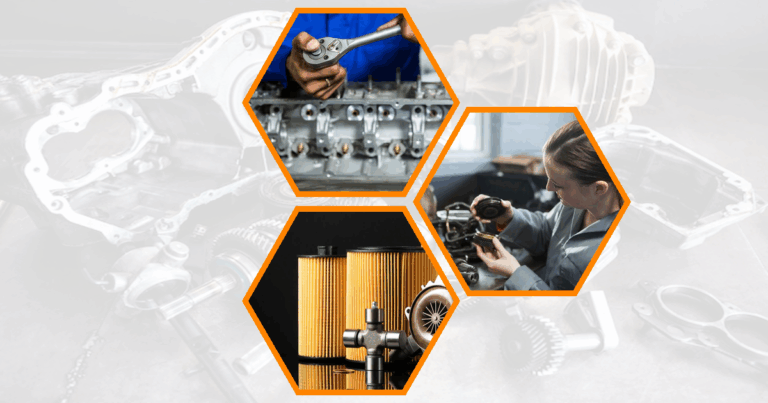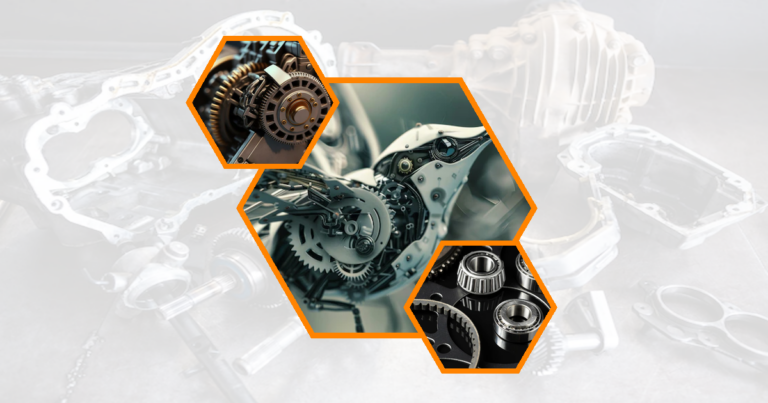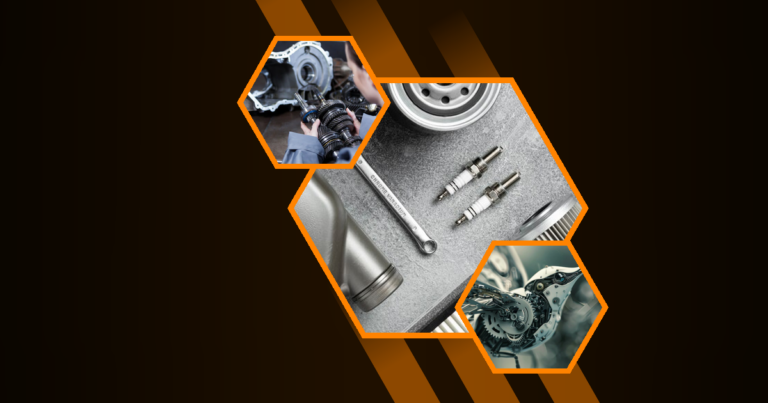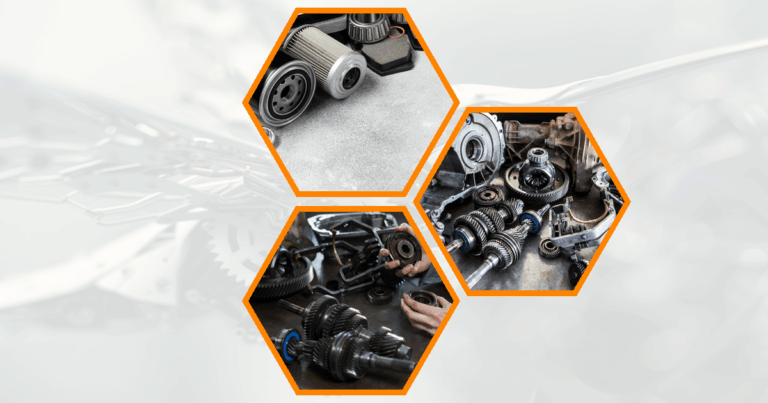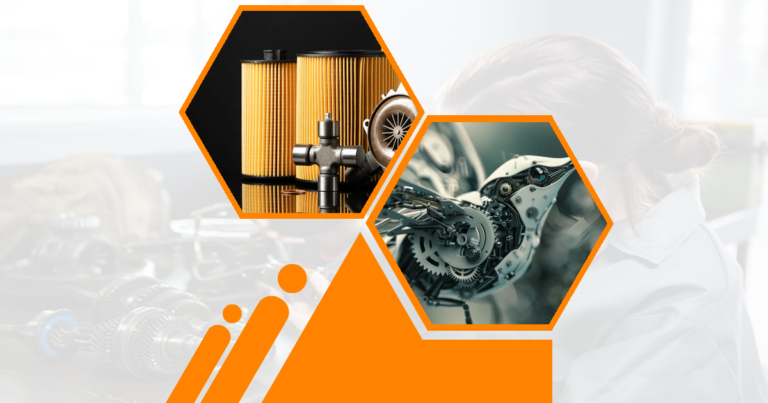Automatic transmissions are a marvel of modern engineering, allowing drivers to enjoy a seamless driving experience without the need to manually shift gears. These systems are integral to multi-speed transmissions in motor vehicles, providing a smooth transition between different speeds and enhancing the overall driving experience.
What Is Automatic Transmission?
An automatic transmission is a multi-speed transmission that shifts gears automatically without requiring the driver to engage a clutch. It allows smooth power delivery in motor vehicles , making driving easier and more convenient.
Unlike manual transmissions, automatics rely on hydraulic and electronic systems to determine the best gear ratio. This enhances fuel efficiency, reduces driver fatigue, and improves acceleration control.
How Hydraulic Automatic Transmissions Work
Hydraulic automatic transmissions rely on a fluid coupling or torque converter to transmit power from the engine to the transmission. This system uses hydraulic fluid to control gear shifts, making the process smooth and efficient. The hydraulic system is crucial for the operation of automatic transmissions, as it manages the pressure and flow of the fluid to engage and disengage gears.
Key Components of an Automatic Transmission System
The automatic transmission system comprises several key components that work together to ensure smooth gear transitions. These include the torque converter, planetary gears, brake bands, and clutches. Each component plays a vital role in the operation of the transmission, contributing to the overall performance and efficiency of the vehicle.
- Torque Converter : Transfers engine power to the transmission.
- Planetary Gears : Provide different gear ratios.
- Brake Bands and Clutches : Control gear engagement and disengagement.
Parts of Automatic Transmission
Understanding the parts of an automatic transmission is essential for grasping how these systems function. Each component has a specific role in the transmission process, contributing to the overall efficiency and performance of the vehicle.
Transmission Casing
The transmission casing is the outer shell that houses all the components of the automatic transmission. It provides protection and support, ensuring that all parts are securely held in place. The casing is typically made of durable materials to withstand the pressures and temperatures generated during operation.
Torque Converter
The torque converter is a critical component that connects the engine to the transmission. It allows the engine to spin independently of the transmission, providing a smooth transition between gears.
Pump (Impeller)
The pump, or impeller, is part of the torque converter that pushes transmission fluid into the turbine. It plays a crucial role in transferring power from the engine to the transmission.
Turbine
The turbine is another component of the torque converter that receives fluid from the pump. It transfers the fluid’s energy to the transmission, enabling the vehicle to move.
Stator (Reactor)
The stator, or reactor, is located between the pump and turbine. It redirects fluid returning from the turbine to the pump, increasing the efficiency of the torque converter.
Torque Converter Clutch
The torque converter clutch locks the converter, creating a direct connection between the engine and transmission. This improves fuel efficiency and reduces heat generation.
Planetary Gears
Planetary gears are a set of gears that provide different gear ratios. They are essential for the operation of automatic transmissions, allowing for smooth transitions between speeds.
Brake Bands and Clutches
Brake bands and clutches control the engagement and disengagement of gears. They ensure that the correct gear is selected based on the vehicle’s speed and load.
- Brake Bands : Wrap around parts of the gear train to hold them stationary.
- Clutches : Engage and disengage gears as needed.
Common Automatic Transmission Problems and Fixes
Automatic transmissions are reliable but can develop issues over time. Here are common problems and their solutions:
Delayed Gear Engagement
If your car hesitates before shifting, it could be due to low transmission fluid or a faulty solenoid . Regular fluid checks can prevent this.
Slipping Gears
Gears that slip unexpectedly may indicate worn-out clutches or low hydraulic pressure . A transmission inspection is needed to diagnose the issue.
Overheating Transmission
Overheating can damage the transmission system. It often occurs due to low fluid levels or heavy towing loads . Cooling system maintenance helps prevent overheating.
Rough Shifting
If shifts feel harsh or jerky, dirty transmission fluid or a failing sensor may be the cause. Flushing the transmission fluid usually resolves the issue.
How Does an Automatic Transmission Work?
Automatic transmissions work by using a combination of hydraulic systems, gears, and clutches to change gears automatically. This process is complex but allows for a smooth driving experience.
Step-by-Step Process of Power Transfer
The power transfer process in an automatic transmission involves several steps. First, the engine’s power is transferred to the torque converter. The torque converter then uses hydraulic fluid to transmit this power to the transmission. The transmission uses planetary gears to select the appropriate gear ratio, which is then transferred to the wheels.
Role of Hydraulic Fluid in Automatic Transmissions
Hydraulic fluid is essential for the operation of automatic transmissions. It provides the necessary pressure to engage and disengage gears, ensuring smooth transitions. The fluid also helps to cool and lubricate the transmission components, preventing wear and tear.
- Pressure Control : Manages gear engagement.
- Cooling : Prevents overheating.
- Lubrication : Reduces friction and wear.
Types of Automatic Transmissions
There are several types of automatic transmissions, each with its own unique features and benefits. Understanding these types can help you choose the right transmission for your vehicle.
Automated Manual Transmission (AMT)
Automated Manual Transmission (AMT) combines the features of manual and automatic transmissions. It uses a computer to control gear shifts, providing the convenience of an automatic with the efficiency of a manual.
Continuously Variable Transmission (CVT)
Continuously Variable Transmission (CVT) offers a seamless driving experience by providing an infinite number of gear ratios. This allows for smooth acceleration and improved fuel efficiency.
Dual-Clutch Transmission (DCT)
Dual-Clutch Transmission (DCT) uses two separate clutches for odd and even gear sets. This allows for faster and smoother gear shifts, enhancing performance and efficiency.
Fully-Automatic Transmission
Fully-Automatic Transmission is the most common type of automatic transmission. It uses a torque converter and planetary gears to automatically change gears based on the vehicle’s speed and load.
- AMT : Combines manual and automatic features.
- CVT : Offers infinite gear ratios.
- DCT : Provides fast and smooth shifts.
- Fully-Automatic : Most common type.
Which Automatic Transmission Is Right for You?
Choosing the best automatic transmission depends on driving needs and preferences:
- Daily Commuting – CVT or Fully-Automatic Transmission.
- Fuel Efficiency – CVT offers the best mileage.
- Performance & Speed – DCT provides quick gear shifts.
- Cost-Effective Option – AMT is the most affordable automatic.
Advantages of Automatic Transmission
Automatic transmissions offer several benefits, making them a preferred choice for modern drivers.
- Ease of Use – No need to manually shift gears, making driving effortless.
- Smoother Ride – Automatic gear changes ensure a comfortable driving experience.
- Better Traffic Handling – Reduces driver fatigue in stop-and-go conditions.
- Optimized Fuel Efficiency – Some automatics adjust gear shifts for maximum fuel economy.
- Enhanced Safety – Allows the driver to focus on the road instead of shifting gears.
Disadvantages of Automatic Transmission
Despite their benefits, automatic transmissions have a few drawbacks:
- Higher Cost – Automatics are generally more expensive than manual transmissions.
- Complex Maintenance – More components mean higher repair costs.
- Less Driver Control – Some driving enthusiasts prefer the control of a manual gearbox.
- Fuel Consumption – Older automatics consume more fuel compared to manuals.
- Potential Transmission Lag – Some models experience delays in gear shifting.
How Does an Automatic Transmission Shift Gears?
Automatic transmissions shift gears using a combination of hydraulic systems, gears, and clutches. The process is controlled by a computer that monitors the vehicle’s speed and load, selecting the appropriate gear ratio for optimal performance.
Maintenance Tips for Automatic Transmissions
Proper maintenance is essential for the longevity and performance of automatic transmissions. Regular servicing and monitoring can prevent costly repairs and ensure smooth operation.
Recommended Service Intervals
It’s important to follow the manufacturer’s recommended service intervals for your automatic transmission. This typically includes regular fluid changes and inspections to ensure all components are functioning properly.
Signs of Transmission Problems
Being aware of the signs of transmission problems can help you address issues before they become serious. Common symptoms include slipping gears, delayed shifts, and unusual noises.
- Service Intervals : Follow manufacturer’s recommendations.
- Transmission Problems : Slipping gears, delayed shifts, unusual noises.
What is the Difference Between Automatic and Manual Transmission?
The main difference between automatic and manual transmissions is how they change gears. Automatic transmissions use a complex system of hydraulic and electronic controls to shift gears automatically, while manual transmissions require the driver to manually change gears using a clutch and gear stick.
Evolution of Automatic Transmissions
Automatic transmissions have evolved significantly over the years, with advancements in technology leading to improved performance and efficiency.
Key Milestones in Transmission Technology
Key milestones in transmission technology include the development of the torque converter, the introduction of electronic controls, and the advent of continuously variable transmissions.
Future Trends in Automatic Transmissions
Future trends in automatic transmissions include the integration of advanced electronics and software, as well as the development of more efficient and environmentally friendly systems.
- Milestones : Torque converter, electronic controls, CVT.
- Future Trends : Advanced electronics, efficiency, environmental impact.
How Long Do Automatic Transmissions Typically Last?
The lifespan of an automatic transmission depends on several factors, including the quality of the transmission, driving habits, and maintenance. On average, automatic transmissions can last between 100,000 to 200,000 miles with proper care.
Automatic Transmission Fluids
Transmission fluid is crucial for the operation and longevity of automatic transmissions. It provides lubrication, cooling, and pressure for gear shifts.
Types of Transmission Fluids
There are several types of transmission fluids, each designed for specific types of transmissions. It’s important to use the correct fluid for your vehicle to ensure optimal performance.
Importance of Proper Fluid Levels
Maintaining proper fluid levels is essential for the health of your transmission. Low fluid levels can lead to overheating and damage, while overfilling can cause leaks and pressure issues.
- Types : Specific to transmission type.
- Fluid Levels : Essential for performance and longevity.
Common Automatic Transmission Issues
Automatic transmissions can experience a range of issues, from minor annoyances to major failures. Understanding these issues can help you address them promptly.
Symptoms of Transmission Failure
Common symptoms of transmission failure include slipping gears, delayed shifts, and unusual noises. If you notice any of these symptoms, it’s important to have your transmission inspected by a professional.
Troubleshooting Automatic Transmission Problems
Troubleshooting automatic transmission problems involves identifying the symptoms and determining the underlying cause. This may require a professional diagnosis and repair. Automotive mechanism distinctions Cars have different parts that work together to make them move and steer while trucks often have stronger engines and special systems to carry heavy loads Camshaft engine component The
Vehicle oscillation reducers help make car rides smoother They stop the bouncing and shaking that can happen when driving Brake system differences Cars can have different types of brakes like disc brakes or drum brakes which work in unique ways to slow down or stop the vehicle
Engine lubricants compared Different types of engine oils are tested to see which ones work best to keep car engines running smoothly and lasting longer
- Symptoms : Slipping gears, delayed shifts, unusual noises.
- Troubleshooting : Identify symptoms, determine cause, seek professional help.
Automatic Transmission Repair and Replacement
Repairing or replacing an automatic transmission can be a significant investment. Understanding when to repair versus replace can help you make an informed decision.
When to Repair vs. Replace a Transmission
Deciding whether to repair or replace a transmission depends on the extent of the damage and the cost of repairs. In some cases, replacing the transmission may be more cost-effective than repairing it.
Average Costs of Transmission Services
The cost of transmission services can vary widely depending on the type of transmission and the extent of the repairs. On average, transmission repairs can range from a few hundred to several thousand dollars.
- Repair vs. Replace : Depends on damage and cost.
- Costs : Vary based on transmission type and repair extent.
FAQs
What is the main function of an automatic transmission?
The main function of an automatic transmission is to automatically change the gear ratio as the vehicle moves. This allows the driver to focus on steering and acceleration without manually shifting gears. It enhances the driving experience by providing smooth transitions between speeds.
How often should I change my automatic transmission fluid?
The frequency of changing automatic transmission fluid depends on the manufacturer’s recommendations. Typically, it should be changed every 30,000 to 60,000 miles. Regular fluid changes help maintain the transmission’s performance and longevity.
Can I drive with a failing automatic transmission?
Driving with a failing automatic transmission is not recommended. It can lead to further damage and potentially leave you stranded. If you notice symptoms of transmission failure, it’s important to have it inspected and repaired promptly.
What happens if automatic transmission fluid is low?
Low transmission fluid causes overheating, rough shifts, and eventual transmission failure. Regular fluid checks help prevent these issues.
Is CVT better than a traditional automatic transmission?
A CVT provides smoother acceleration and better fuel efficiency, while traditional automatics offer better durability and performance.
Can you convert a manual transmission into an automatic?
Yes, but the process is costly and requires extensive modifications, including a new transmission system, torque converter, and electronic control module.
